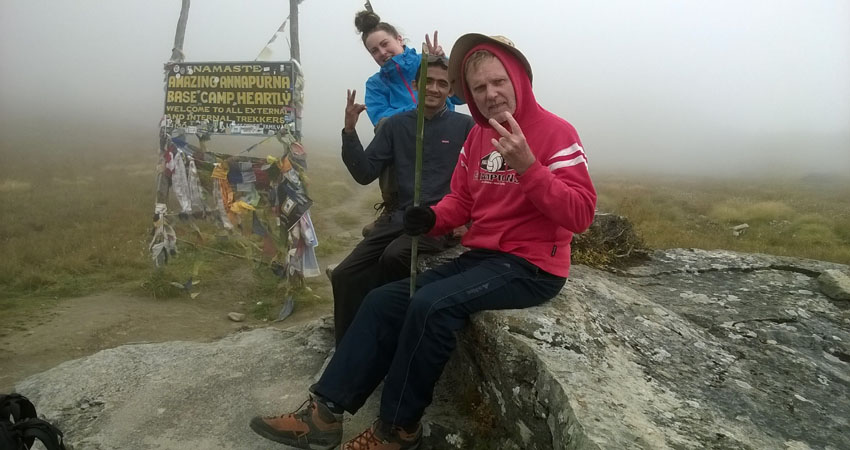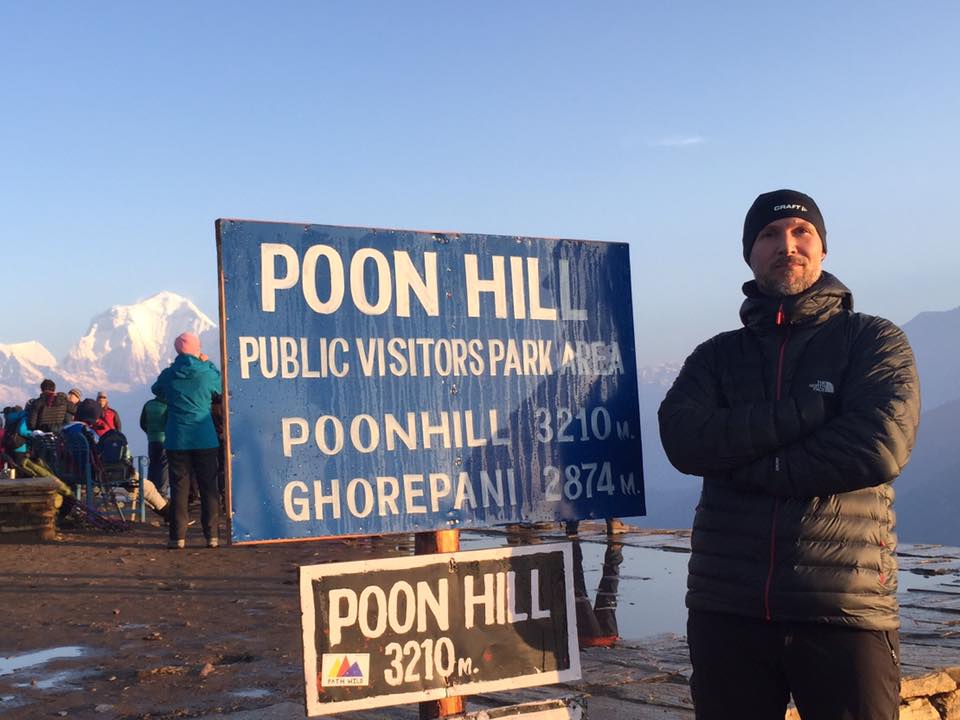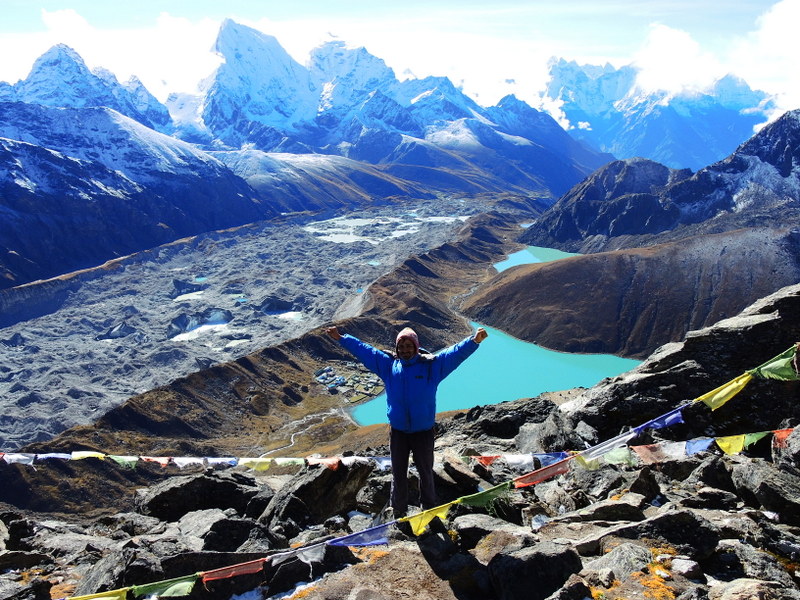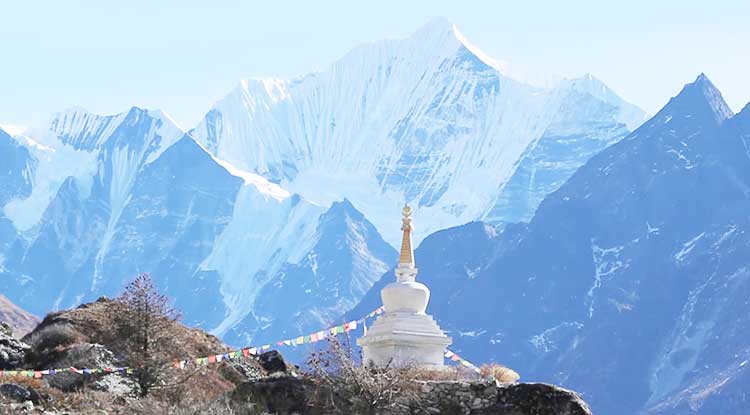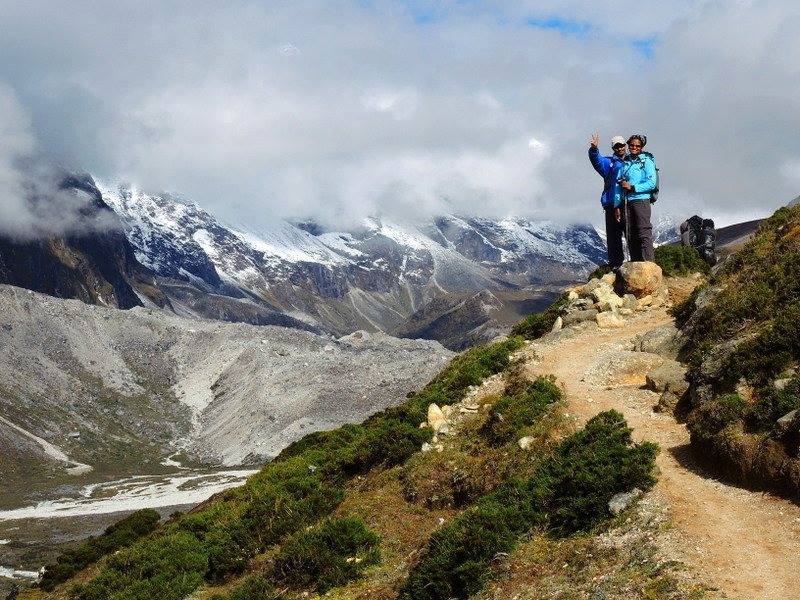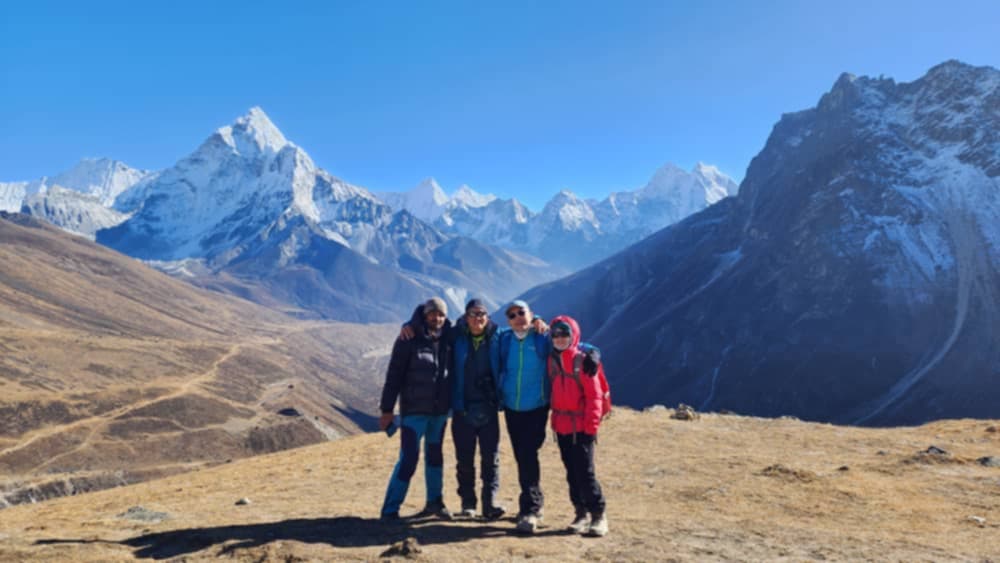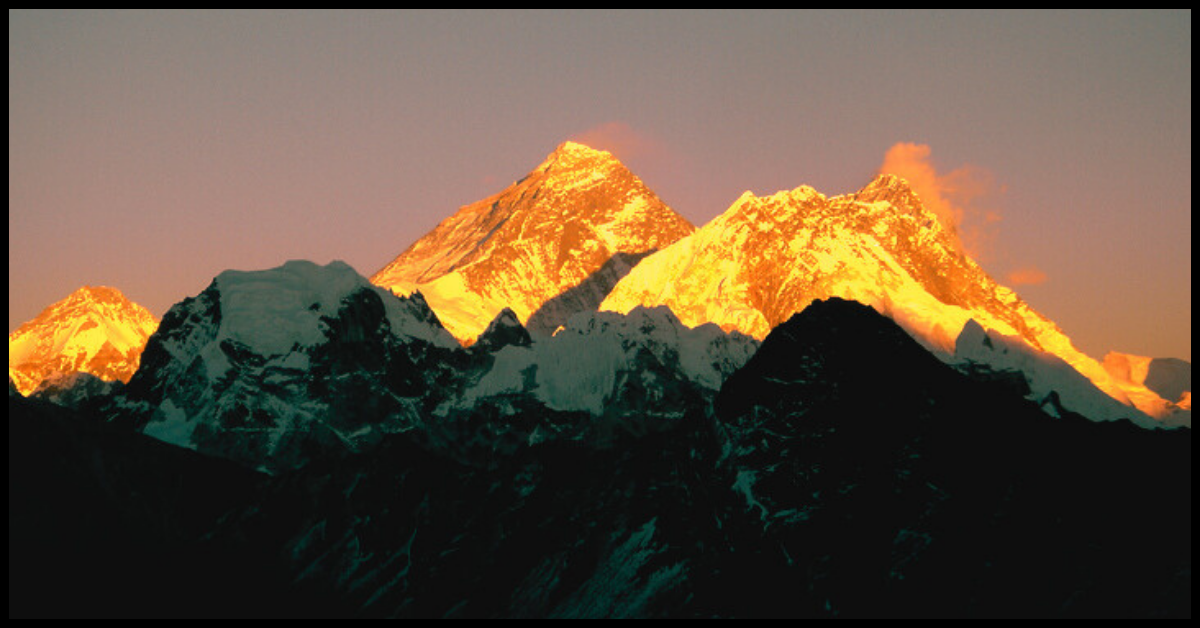Tour Description
The Manaslu and Annapurna Circuit trek masterfully unities two of Nepal’s most legendary trekking routes into an extraordinary adventure. Mount Manaslu , reversed as a Symobol of Intellect and soul and Mount Annapurna, epitomizing “abundance and nourishment, set the stage for an awe-inspiring odyssey. This meticulously designed 24-day journey begins in the quaint village of Sotikhola, leading trekkers through the pristine, untamed wilderness of the Manaslu region. Crossing the dramatic Larkya La Pass, the trek gracefully transitions into the Annapurna Circuit at Dharapani, where the tranquil Marshyangdi River guides you toward the grandeur of the Thorong La Pass.
As you journey through the region, marvel at the majestic peaks of Annapurna I, Dhaulagiri, and the mystical Machhapuchhre (Fishtail Mountain). The trail takes you through traditional villages where Gurung, Thakali, and Manangi communities reside, offering an immersive glimpse into their harmonious way of life. Here, intricately designed homes, sacred Buddhist monasteries, and ancient Hindu temples narrate stories of spirituality and resilience. The trek crescendos at Thorong La Pass (5,416 meters), a challenging yet exhilarating climb that rewards you with breathtaking 360-degree panoramas of the Annapurna and Dhaulagiri ranges.
Merging the Manaslu and Annapurna Circuits is more than just an adventure—it is an odyssey that pushes the boundaries of human endurance and unlocks the soul’s longing for beauty. The Manaslu Circuit is a sanctuary of unspoiled beauty, encircling the towering Mount Manaslu (8,163 meters), the eighth-highest peak in the world. Trekkers are treated to mesmerizing vistas of snow-clad peaks and an ever-changing tapestry of landscapes, from dense emerald forests and terraced farmlands to serene high-altitude meadows. The Annapurna Circuit is globally renowned for its astonishing diversity, both in landscapes and cultures. This iconic route showcases the stunning contrasts of Nepal's geography, from lush rhododendron forests bursting with vibrant colors to stark, dramatic desert-like plateaus at higher altitudes. The blend of rugged wilderness and cultural immersion ensures a holistic experience, offering not just a physical challenge but also a spiritual awakening. This journey takes trekkers beyond mere sightseeing to deeply connect with Nepal’s untouched landscapes and its diverse, welcoming communities.
Whether you seek the thrill of crossing iconic mountain passes or the tranquility of walking through ancient villages, the combined Manaslu and Annapurna Circuit Trek promises a once-in-a-lifetime experience. It’s a journey that enriches the heart, captivates the mind, and leaves an indelible mark on the soul of every adventurer.
Distance
Mount Manaslu, the eighth-highest peak in the world, is situated approximately 170 kilometers (106 miles) west of Kathmandu, Nepal’s bustling capital city. It lies about 65 kilometers (40 miles) east of Pokhara, a popular gateway to many trekking adventures.
Mount Annapurna, the world’s tenth-highest mountain, is located around 200 kilometers (124 miles) west of Kathmandu. It sits just 30 kilometers (19 miles) north of Pokhara, making it highly accessible to trekkers and travelers.
Both Mount Manaslu and Mount Annapurna are nestled in the western region of the majestic Himalayas, placing them relatively close to one another. The distance between these two iconic peaks is approximately 40 to 50 kilometers (25 to 31 miles). Their close proximity offers trekkers the unique opportunity to explore both regions within a single expedition, making it a perfect choice for those seeking diverse landscapes and cultural experiences in one journey. These geographic details highlight the accessibility and connectivity of the Manaslu and Annapurna trekking regions, inviting adventurers from around the globe to discover the unparalleled beauty of Nepal’s Himalayan wonders.
Permits required
Manaslu Restricted Area Permits
Annapurna Conservation Area Permit
TIMS card
The stunning Mounstains vistas on the Manaslu and Annapurna circuit trek
The combined Manaslu and Annapurna Circuit Trek offers an unparalleled opportunity to explore two of Nepal’s most iconic regions. This incredible journey brings you face to face with the towering giants of the Himalayas, including the awe-inspiring Mount Manaslu and Annapurna.
From the outset, trekkers are treated to a breathtaking panorama of some of the world’s most renowned peaks. Visible along the route are Himlung Himal (7,126m), Himal Chuli (7,893m), Cheo Himal (6,820m), and Shringi Himal (7,187m), along with the iconic Annapurna Range (Annapurna I, II, III, IV). Additionally, the trek offers stunning views of Dhaulagiri (8,167m), Nilgiri (7,061m), Gangapurna (7,454m), and many more, each one adding to the grandeur of this unforgettable adventure.
This trek promises not only a physical challenge but also a spiritual connection with Nepal’s rich natural beauty.
Step into The Holy ambience of muktinath temple
Muktinath Temple, nestled at an altitude of 3,710 meters in the Mustang District, offers a spiritually enriching experience for trekkers along the Manaslu Annapurna Circuit. This sacred site is a harmonious blend of Hindu and Buddhist traditions, making it a profound destination for pilgrims of both faiths. The temple complex features a Buddhist monastery, prayer wheels, and chortens, all contributing to the tranquil and spiritual atmosphere of the area.
At Muktinath, visitors are greeted by 108 sacred water spouts, known as Muktidhara, which are believed to possess healing powers and deep spiritual significance. Many come to bathe in the icy waters as part of a purification ritual, symbolizing the cleansing of past sins. The region draws thousands of devotees each year, who seek blessings in the presence of the mighty peaks of Annapurna, Dhaulagiri, and Nilgiri, creating a serene backdrop for reflection and prayer.
As you journey through this 24-day trek, make sure to explore the revered Muktinath region, where the sacred energy of the temple and the surrounding mountains invite you to reconnect with both nature and spirituality.
Manang, The enchanter of the Annapurna
Manang, often called the “Enchanter of the Annapurna,” is a charming village located in the heart of the Himalayas, at an elevation of approximately 3,540 meters. Nestled in central Nepal, this picturesque village serves as a popular resting point for trekkers exploring the Annapurna region. With modern trekking facilities, reliable health services, and good telephone and internet connectivity, Manang offers a comfortable stopover within the Annapurna Conservation Area. It also serves as an ideal location to acclimatize before embarking on the Annapurna Circuit trek.
The village is renowned for its natural beauty, rich cultural heritage, and peaceful atmosphere. Surrounded by dramatic mountain views, Manang lives up to its title as the “enchanter” of the Annapurna region. Visitors are drawn to the area’s many hiking trails and viewpoints, which offer plenty of opportunities for exploration. For those seeking additional adventure, a short trek to Milarepa’s Cave, Braga Village, and Bhojo Gompa awaits. You can also explore the surrounding villages along the Marsyangdi River, immersing yourself in the local culture and the stunning landscapes that attract countless travelers, both local and international.
Venture the apple valley of Nepal, Jomsom
Jomsom, located in the Kali Gandaki Valley at an elevation of approximately 2,700 meters, serves as the gateway to the Upper Mustang in Nepal's Mustang District. This region, known for its breathtaking landscapes, offers a unique blend of natural beauty and cultural richness.
Much like the saying, "an apple a day keeps the doctor away," during your trek through the Manaslu and Annapurna Circuit, you’ll have the chance to taste locally grown apples. Farmers in the area cultivate a variety of apples, including sweet red apples, tangy green apples, and the special local Himalayan apples, all of which are harvested in Jomsom. As part of your 24-day itinerary with Nepal Holiday Treks and Tours, you’ll savor these fresh fruits right from the source.
In addition to the apples themselves, Jomsom is renowned for its delicious apple-based delicacies. You can indulge in mouthwatering apple pies, apple cider, and the famous apple brandy, locally known as "Marpha." The rich, organic flavor of Jomsom’s apples is unlike any other, offering an authentic taste of the region’s agricultural heritage.
Beyond apples, Jomsom is a place where you can experience stunning natural vistas, rugged terrains, and a culture deeply rooted in history. This idyllic valley not only offers visual beauty but also invites visitors to explore its distinctive cultural traditions while enjoying the delightful apple treats.
Best time to visit
The best time to embark on the Manaslu-Annapurna Circuit Trek is during the spring and autumn seasons, when the weather is most favorable and the scenery is at its peak.
Spring (March to May): This season offers clear skies and mild temperatures, making it perfect for trekking. As you hike, you’ll be greeted by vibrant rhododendron blooms, creating a stunning contrast against the mountainous backdrop.
Autumn (September to November): Known for its stable weather and excellent visibility, autumn is another ideal period for trekking. The crisp air and vivid landscapes enhance the trekking experience, with panoramic views that are simply breathtaking.
Food and Accommodation
During the Manaslu Annapurna Circuit Trek, trekkers stay in tea houses and homestays, which are local homes offering basic amenities such as beds, blankets, and meals. These cozy accommodations provide a welcoming environment to relax after a day of hiking, with the warmth of a fireplace and the company of fellow travelers. The stunning mountain views and the homely atmosphere make these stays a memorable part of the journey.
The food is a highlight of the trek, with local dishes like Dal Bhat (rice and lentil soup), Momos (dumplings), and noodles commonly served. Some tea houses even offer western options like pizza and pancakes. Hot drinks such as tea, coffee, and hot chocolate are available, providing warmth and comfort during the trek. Each meal is freshly prepared, offering a taste of the local culture and a perfect ending to a day in the Himalayas.
Altitude sickness during High passes
Trekking through Nepal’s high-altitude circuits, such as the Manaslu and Annapurna, is an adventure of a lifetime, but it comes with its own set of challenges. With peaks like Larkya La Pass (5,160 meters) and Thorong La Pass (5,416 meters), these trails offer stunning views, but they also expose trekkers to significant altitude gain. To ensure your safety and enjoyment, it’s vital to give your body enough time to acclimatize to the changing altitude. Altitude sickness can affect anyone, manifesting in symptoms like headaches, dizziness, nausea, fatigue, shortness of breath, loss of appetite, and sleep disturbances. These signs should not be ignored, as they can worsen without proper attention.
The most demanding aspect of trekking at high altitudes is crossing these challenging passes, where the risk of altitude sickness is at its peak. To avoid complications, staying hydrated is essential—dehydration can worsen symptoms and slow your acclimatization. If necessary, descending to a lower altitude can relieve discomfort. Guides are indispensable during these treks, offering valuable advice on acclimatization, identifying symptoms early, and helping you make decisions about when to ascend or descend. By following their guidance and prioritizing your health, you can experience the breathtaking beauty of Nepal’s high passes while minimizing the risks of altitude sickness.
Physical Fitness
Prepare for the trek by focusing on endurance and strength. Long hours of walking, often on rugged, steep terrain, require more than just stamina. Activities like hiking, running, cycling, and swimming will help build the sustained effort needed. Strong legs are essential for tackling both uphill and downhill sections, while a solid core ensures stability and balance on uneven surfaces. Incorporate stretching exercises for flexibility in your hamstrings, calves, hips, and lower back, as well as stair climbing to simulate the terrain. Build a balanced fitness routine that includes cardio, strength, and flexibility. Listen to your body and avoid overexertion—smart preparation leads to a successful trek.
Some of Nepal Holiday Treks and Tours Responsible travel approach
· Support Local Communities – Hire local guides and contribute to the economy.
· Respect Local Culture – Follow dress codes, traditions, and ask before taking photos.
· Travel Smart – Choose the right season and pack light to minimize resources.
· Minimize Environmental Impact – Use reusable bottles, purify water, and avoid animal tourism.
· Eat Local – Enjoy authentic dishes to support local businesses.
· Offset Carbon Footprint – Take actions to reduce and offset your emissions.
· Conserve Nature – Be mindful of natural resources and environmental preservation.
· Educate Yourself – Learn about the region, culture, and ethical travel practices.

